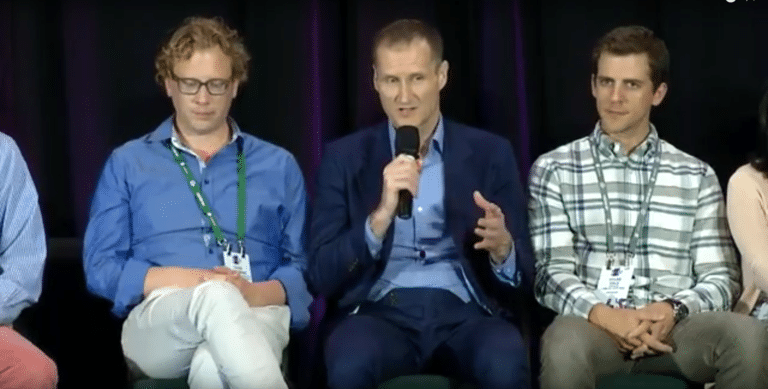
Investors are excited about VR and AR like everyone else. But they have another layer of consideration and risk, given higher stakes. This was one of the takeaways during a recent roundtable discussion of investors (video below).
The risk profile and stages of VR and AR have also attracted a unique mix of investors, including strategic/corporate investors, and overseas money. This aligns with past discussions we’ve had with strategic investors from Comcast Ventures, Lenovo and Orange.
“I was looking at VR and AR investment over the past couple years, and I don’t think I saw a single traditional silicon valley venture firm.” said Ben Narasin, general partner at Canvas Ventures. “It’s a lot of strategic [investors], and money out of China.”
There’s also a bit more risk in VR and AR, due to each sector’s respective early stages of development. That’s given rise to many seed stage funds that focus on AR and VR, such as Super Ventures, Presence Capital and a handful of others.
“There’s platform risk in that there’s not a leading VR or AR platform like iOS or Android that you can build upon,” said Qualcomm Ventures’ Sachin Deshpande. “And on top of that, there’s startup risk. It’s risk times risk, so that’s risk squared,”
As for actionable advice for pitching investors, the panel divulged lots of tactics for startups seeking funding any time soon. And the headline there is to refine a narrative that expresses market size, unique value, and defensibility… but to do it quickly.
“There are a few things that typically get missed. One is attention to brevity,” said Loup Ventures’ Gene Munster. “The respect for time and the clarity we hear from entrepreneurs that know how to effectively communicate and answer questions is a great value to a VC.”
Narasin agrees and adds that it’s not just about brevity but telling the right story. Refrain from long build ups about general tech transformation, or cute metaphors (slide graphics of ape-to-man evolution). Focus on things like specific points of differentiation.
“One classic mistake from first-time entrepreneurs is long narratives to get to the point. Nobody cares,” he said. “What are you doing? Who are you? Why are you qualified to do it? Why is it a big market? You’ve got to get that point across and you’ve got to be able to do it soon.”
Lastly, don’t cold call. It’s bad for optics. As Marc Andreessen has said many times, a true test of an entrepreneur’s devotion and sales acumen is if he or she can network their way to him. It’s a true test of any entrepreneur’s value and ability… before the pitching has even begun.
“VCs will tell their limited partners how they have this great deal flow based on relationships,” said Munster. “Which means that a cold call coming in, even if it’s a phenomenal idea, [is] probably going to be viewed skeptically. My suggestion is to try to find a way to network into the VC.”
The full session video is below, including lots of astute comments from Dylan Gale at Comcast Ventures, Radhika Jadcherla from Silicon Catalyst and other panelists.
For a deeper dive on AR & VR insights, see ARtillry’s new intelligence subscription, and sign up for the free ARtillry Weekly newsletter.
Disclosure: ARtillry has no financial stake in the companies mentioned in this article, nor received payment for its production. Disclosure and ethics policy can be seen here.
Header image credit: YouTube
